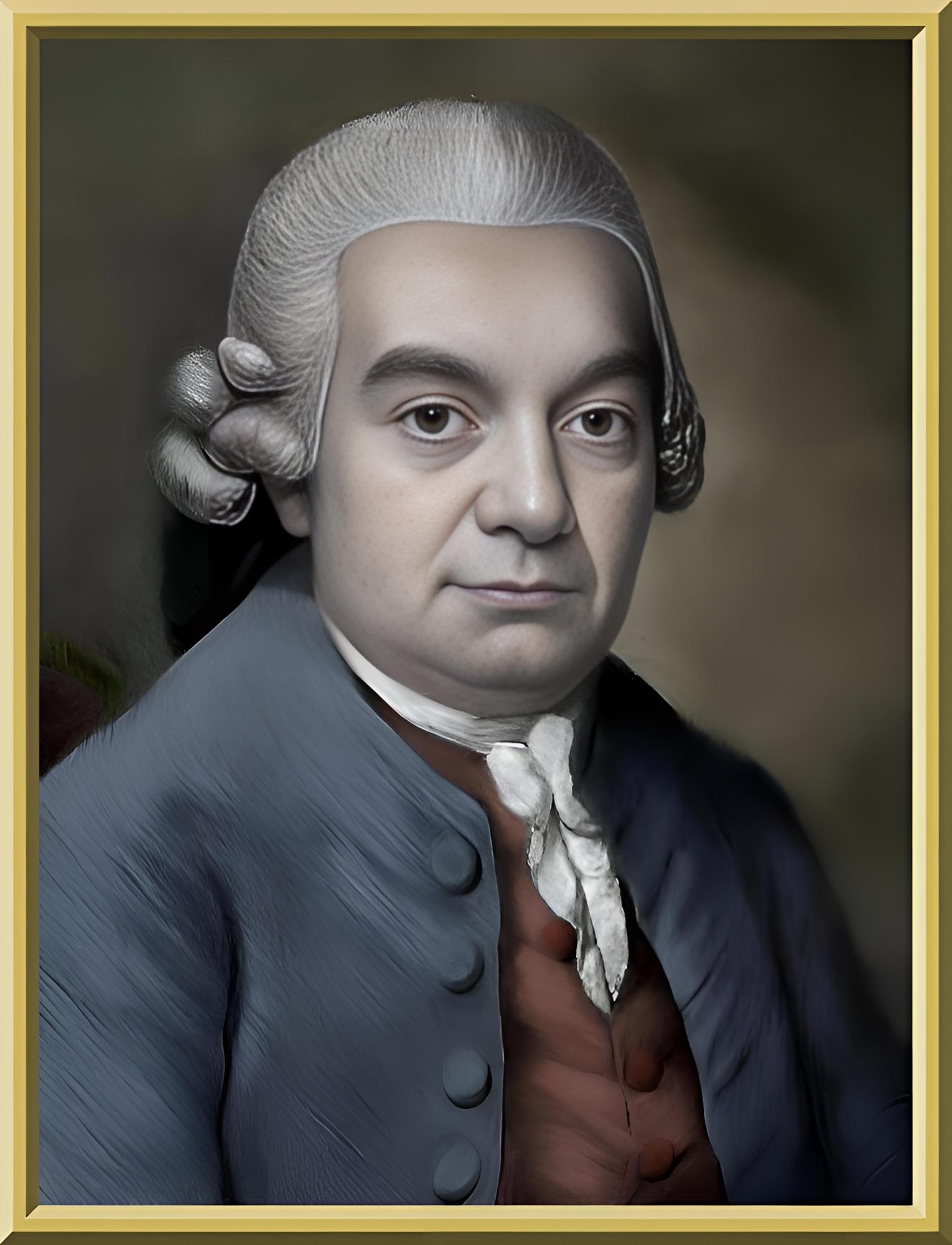Emanuel Bach
Carl Philipp Emanuel Bach was the second son of the great Bach, born in Weimar in 1714. His godfather was Georg Philipp Telemann. He is said to have resembled his father more than any other of Bach’s sons, and was devoutly religious, hardworking, and honest. “In composition and clavier playing, I learned nothing from anyone but my father.” He later recalled in his autobiography. From 1740, he was harpsichordist in the court orchestra of King Friedrich the Great of Prussia for about 30 years, accompanying him on the flute. At that time, the Quantz, Graun, and Benda brothers were at the court in Berlin, but Bach’s salary was lower than theirs.
During his Berlin years he composed many symphonies, concertos for clavier and other instruments, and above all many solo clavier pieces. His famous book “Versuch über die wahre Art das Clavier zu spielen” (An Essay on the Correct Clavier Technique) was published in 1753 and 1762, respectively, in parts 1 and 2. The first part describes systematically in detail how to play the various ornaments of the time, and the second part how to play the basso continuo. In 1752, Quantz published a similar book for the flute, but there are discrepancies in the description of how to play ornaments with the description in Bach’s book.
This is the case, for example, in the way the ornamentation “appoggiatura” to be played. Quantz says that “The appoggiatura attached to a dissonance must be short”, while Bach says that “The appoggiatura is always long”. This is the case, for example, when a note in the eighth degree resolves to a note in the seventh degree, and Bach’s argument is the better one in this debate. As a position of keyboardist, Bach recommends that all composers assign detailed figured bass to the “appoggiatura” as well.
The famous Sonata in A-minor for unaccompanied flute was written during his Berlin years and is the only flute work published during his lifetime. Along with the Great Bach’s Partita for Solo Flute, it is the greatest solo flute work in history.
Emanuel’s treatment in Berlin was never commensurate with his abilities. During his tenure, he made several attempts to change jobs, but each time he was detained and given a raise in salary. Finally, however, in 1768, he succeeded his godfather Telemann as director of music in Hamburg. His work in Hamburg became consisted mainly of religious vocal works such as cantatas, passions, and oratorios. In the field of instrumental music, he continued to write symphonies, concertos, and solo clavier works. He also composed the masterpiece so-called “Hamburg Sonatas” for flute.
Emanuel Bach’s music is often called “Sensitive style”. The so-called “Gallant style” of the Classical period flourished at about the same time as the so-called “Gallant style” of the Classical period, but in contrast to the “Gallant style” with its “elegance”, the “Sensitive style” is also called “Sturm und Drang” (storm and urge) and can be regarded as the forerunner of the Romantic period. Typical examples include the “Four Symphonies (Hamburg Symphonies)” and the Flute Concerto in D minor.
Finally, I would like to recommend two discs. The first is a complete set of flute concertos, and the flutist is Alexis Kossenko. And the second one is the Traverso by François Lazarevitch and Pianoforte by Justin Taylor. This CD is a great opportunity to hear the best performances of the trio sonatas and unaccompanied flute sonata. #baroque #bach #片山俊幸


